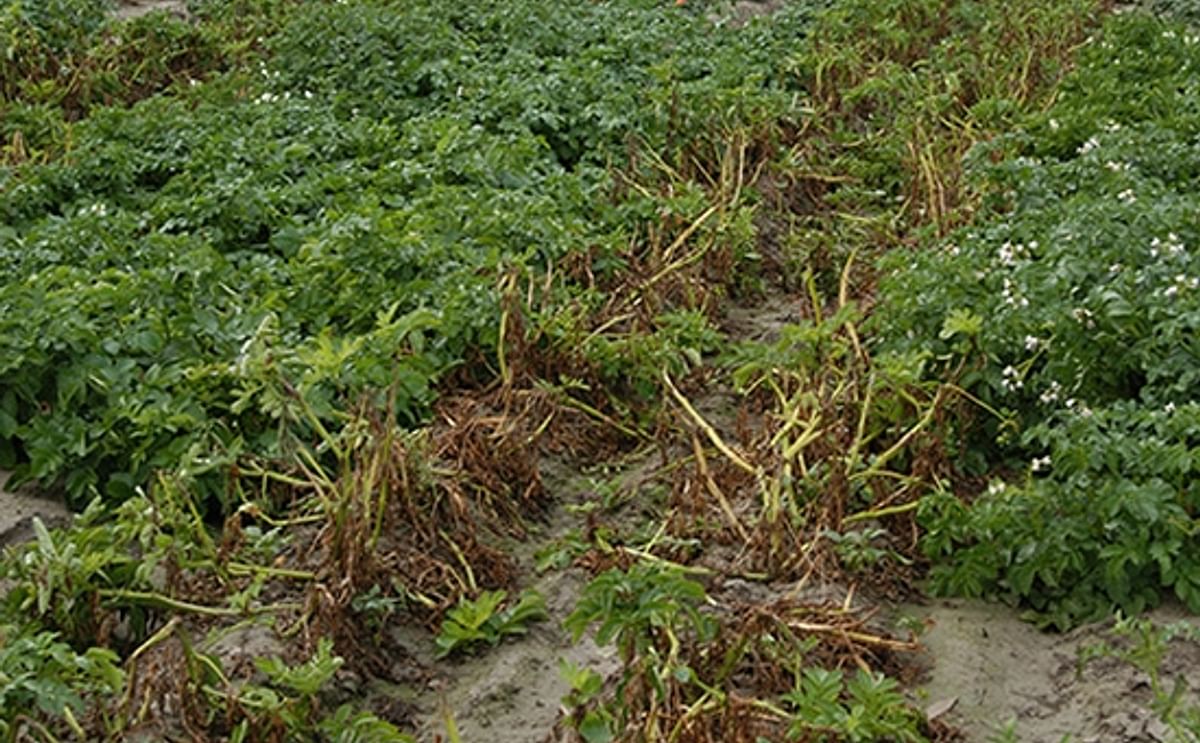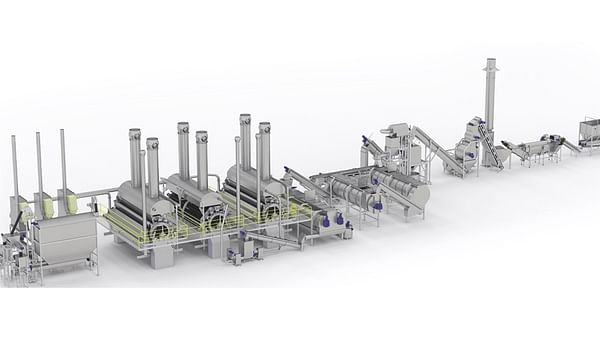Washington State University researchers have discovered that a common potato virus and a fungus-like pathogen can work together to damage the crop. In a study published this summer, scientists found that potato virus S (PVS) breaks down late blight resistance in potato.
The study is in the American Journal of Potato Research (Lin, Y-H., D.A. Johnson and H.R. Pappu. 2014. Effect of Potato virus S infection on late light resistance in potato. Amer. J. Potato Research).
The implications will impact potato breeding programs, as they must now take the virus into consideration during breeding for potato late blight resistance, said Hanu Pappu, the Sam Smith Distinguished Professor in plant pathology.
Pappu teamed with WSU colleague Dennis Johnson, professor of plant pathology, and Ph.D. student Yu-Hsuan Lin, now a postdoctoral fellow at Cornell University.
More than half of the nation’s potatoes are produced in the Pacific Northwest. The potato industry contributes over $3.5 billion annually to Washington state’s economy.
PVS is commonly found around the world and historically hasn’t been a concern for growers in the U.S.
“Now it’s demanding attention because of its role in making late blight disease more severe,” Pappu said.
Lin developed an experimental system to test for the three-way interactions among potato, late blight pathogen and PVS. She validated the interactions under controlled conditions, and this platform will be useful for screening additional potato genotypes. Lin said her research used only one late blight resistant variety of potato because it is the only commercially available variety that has both tuber and foliar resistance.
Pappu said further research is needed to see exactly how these pathogens collaborate at the molecular level and how the host’s genetic mechanisms affect the pathogens.
“This is much more complicated research,” he said. “We normally study how a plant interacts with a single pathogen. Now we have to find how two very different pathogens interact with each other and the plant.
“Lin’s findings underscore the need to keep in mind the dynamic nature of the pathogens and their interaction with their hosts,” he said.
The project was funded by the Washington State Potato Commission.

九月 28, 2014
来源
Washington State University
Like to receive news like this by email? Join and Subscribe!
NEW! Join Our BlueSky Channel for regular updates!
Related Topics:
精选企业
Related News

一月 06, 2025
Potato sellers in West Bengal upset over restrictions on sale

一月 05, 2025
Early Warning Systems for Sustainable Potato Late Blight Management: a World Potato Congress Webinar by Ivette Acuña

一月 03, 2025
Rabobank's Potato Market Experts to Share Insights at Potato Expo 2025
Latest News
Sponsored Content
Sponsored Content
Sponsored Content
Sponsored Content
Sponsored Content








